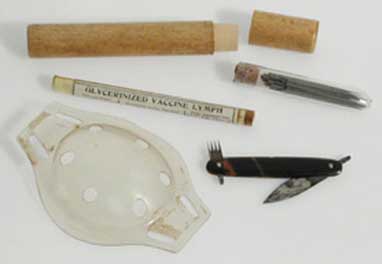 People who are protected from getting a disease are said to be immune. In the 17th and early 18th centuries, some people began to believe that immunity from smallpox could be bestowed on a person by deliberately giving them the disease. Consequently, many people encouraged their children to play with young smallpox patients in the hope that they would contract the disease in a mild form and thus be immune to future attack. This process is called Inoculation. It originated in Turkey in and subsequently spread throughout Europe. The Massachusetts Puritan leader, Cotton Mather, introduced it into the United States in the 1720s.
People who are protected from getting a disease are said to be immune. In the 17th and early 18th centuries, some people began to believe that immunity from smallpox could be bestowed on a person by deliberately giving them the disease. Consequently, many people encouraged their children to play with young smallpox patients in the hope that they would contract the disease in a mild form and thus be immune to future attack. This process is called Inoculation. It originated in Turkey in and subsequently spread throughout Europe. The Massachusetts Puritan leader, Cotton Mather, introduced it into the United States in the 1720s.
There was always danger that the person being inoculated might actually contract a very serious case of smallpox, become ill, and even die. At the end of the 18th century, the English physician Edward Jenner observed that people who contracted a disease called cowpox (which is related to smallpox but much less serious) never caught smallpox. He correctly surmised that the cowpox rendered the person immune to smallpox, but did so much more safely that inoculation. Deliberately giving someone cowpox, to confer immunity to smallpox was called vaccination. It became a widespread preventative medical practice spread in the 19th century. Individuals, municipalities, states and countries soon learned that vaccination kept their environments free of the disease. It was often made compulsory to check an epidemic in the making. Smallpox was the first disease to yield to a vaccine. Above photo: Instruments for vaccination, needles, lancet and sheild to protect
against infection of vaccination site.
